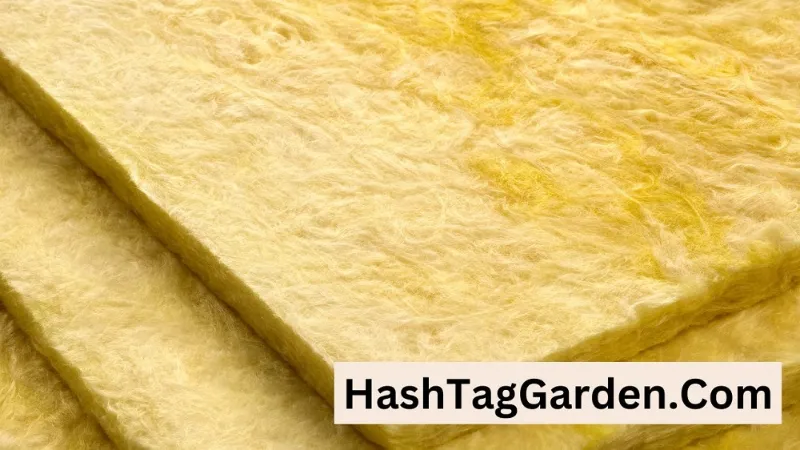Hydroponics is a method of growing plants without soil, using a nutrient-rich water solution to deliver essential nutrients directly to the plant roots.
One of the popular substrates used in hydroponic systems is rockwool, which is made from volcanic rock that is melted and then spun into fibers to create a fibrous and porous material.
Hand watering rockwool is a technique used by hydroponic growers to manually water the rockwool cubes or slabs, ensuring that the plants receive the right amount of water and nutrients.
| Heading | Description |
|---|---|
| Water Source | Filtered water is recommended for best results |
| Nutrient Schedule | Follow recommended nutrient schedule |
| pH and EC Levels | Maintain optimal range for plant growth |
| Watering Method | Water evenly and consistently |
| Plant Observation | Regularly observe plant health |
| Hygiene Practices | Practice good hygiene for disease prevention |
| Record Keeping | Keep track of watering routine and observations |
Benefits of Hand Watering Rockwool
Hand watering rockwool offers several benefits compared to other methods of watering in hydroponic systems. Let’s explore some of these benefits:
Increased Control over Nutrient Delivery
Hand watering rockwool allows growers to have greater control over the nutrient delivery to the plants. By manually watering the rockwool, growers can adjust the frequency and amount of water and nutrients based on the specific needs of the plants at different growth stages.
This level of control ensures that the plants receive the right balance of nutrients, leading to healthier growth and higher yields.
Better Oxygenation for Roots
Another benefit of hand watering rockwool is that it promotes better oxygenation for the plant roots. The porous structure of rockwool allows for ample air circulation, preventing the roots from becoming waterlogged and promoting oxygen uptake. This helps in maintaining healthy root development and prevents root rot, which can occur in stagnant water.
Prevention of Overwatering
Hand watering rockwool helps in preventing overwatering, which is a common issue in hydroponic systems. Overwatering can lead to oxygen deprivation for the roots, causing root rot and plant stress. By manually watering the rockwool, growers can avoid overwatering and ensure that the plants receive the right amount of moisture without drowning the roots.
One of our articles –Rockwool Watering Schedule.
How to Hand Water Rockwool

Step 1: Soaking Rockwool Cubes
Before using rockwool for growing plants, it is important to soak the rockwool cubes in water to fully saturate them. This can be done by placing the cubes in a container of clean, pH-balanced water and letting them soak for several hours or overnight.
This process ensures that the rockwool cubes are evenly saturated with water and ready for planting.
Step 2: Testing pH and EC Levels
After soaking the rockwool cubes, it is crucial to test the pH and EC (electrical conductivity) levels of the water to ensure that they are within the appropriate range for plant growth.
The ideal pH range for most plants is between 5.5 and 6.5, while the EC level should be adjusted based on the specific nutrient requirements of the plants being grown. pH and EC meters can be used to measure and adjust the levels accordingly.
Step 3: Watering Frequency and Amount
Once the rockwool cubes are soaked and the pH and EC levels are adjusted, the next step is to determine the watering frequency and amount based on the growth stage of the plants. Younger plants may require more frequent watering with smaller amounts of water, while older plants may need less frequent watering with larger amounts of water.
It is important to monitor the moisture level of the rockwool and adjust the watering accordingly to prevent over or under watering.
Step 4: Monitoring Plant Health
Hand watering rockwool also involves regularly monitoring the health of the plants. This includes observing the color and texture of the leaves, checking for any signs of nutrient deficiencies or pests, and adjusting the watering and nutrient schedule accordingly.
It is important to keep a close eye on the overall health of the plants and make necessary adjustments to ensure their well-being.
Common Mistakes to Avoid
While hand watering rockwool can be an effective method for growing plants in hydroponic systems, there are some common mistakes that should be avoided. Here are a few:
Overwatering
Overwatering is a common mistake that can lead to root rot and plant stress. It is important to avoid watering the rockwool excessively, as it can result in waterlogged roots and inhibit oxygen uptake. Carefully monitor the moisture level of the rockwool and adjust the watering frequency and amount accordingly to prevent overwatering.
pH and EC Imbalances
Another mistake to avoid is neglecting to regularly test and adjust the pH and EC levels of the water. pH and EC imbalances can affect nutrient uptake and plant health. Be sure to regularly monitor and adjust the pH and EC levels of the water to maintain the optimal range for plant growth.
Uneven Watering
Hand watering rockwool requires consistent and even watering to ensure that all plants receive the same amount of water and nutrients. Avoid uneven watering, as it can result in inconsistent growth and nutrient imbalances among the plants. Take care to evenly water all the rockwool cubes to promote uniform growth.
Tips for Successful Hand Watering
To achieve successful hand watering of rockwool, here are some tips to keep in mind:
Use Filtered Water
Using filtered water can help prevent any impurities or contaminants in the water from affecting the nutrient uptake of the plants. It is recommended to use clean, filtered water to ensure the best possible growing conditions for the plants.
Follow Recommended Nutrient Schedule
Follow the recommended nutrient schedule for the specific type of plants being grown in the rockwool. Different plants have different nutrient requirements at various stages of growth, so it is important to provide them with the right nutrients at the right time. Consult the manufacturer’s guidelines or a reputable source for the appropriate nutrient schedule.
Maintain Optimal pH and EC Levels
Regularly monitor and adjust the pH and EC levels of the water to maintain the optimal range for plant growth. As mentioned earlier, most plants thrive in a pH range of 5.5 to 6.5, and the EC level should be adjusted based on the specific nutrient requirements of the plants being grown. Keeping the pH and EC levels in the appropriate range ensures that the plants can effectively absorb the nutrients from the water.
Water Evenly and Consistently
Ensure that all the rockwool cubes are evenly and consistently watered to promote uniform growth among the plants. Avoid overwatering or underwatering, as both can adversely affect plant health.
Monitor the moisture level of the rockwool and adjust the watering frequency and amount accordingly.
Observe Plant Health
Regularly observe the color, texture, and overall health of the plants. Look for any signs of nutrient deficiencies, pests, or diseases. Adjust the watering and nutrient schedule as needed to address any issues promptly and ensure the well-being of the plants.
Practice Good Hygiene
Maintaining good hygiene practices is crucial for hand watering rockwool. This includes washing hands thoroughly before handling the rockwool cubes, using clean tools and equipment, and avoiding cross-contamination between different plants.
Good hygiene helps prevent the spread of diseases and pests, ensuring healthy plant growth.
Keep Records
Keeping records of your hand watering routine, including watering frequency, nutrient schedule, pH and EC levels, and observations of plant health, can be valuable for tracking the progress of your plants and making informed adjustments to optimize their growth.
This data can also be useful for troubleshooting any issues that may arise during the growing process.
Related Questions
Can I use tap water for hand watering rockwool?
It is recommended to use filtered water to prevent impurities and contaminants from affecting plant health. If tap water is used, it should be tested and adjusted for pH and EC levels to ensure they are within the appropriate range for plant growth.
How often should I water rockwool cubes by hand?
The watering frequency depends on the growth stage of the plants and the moisture level of the rockwool. Younger plants may require more frequent watering with smaller amounts of water, while older plants may need less frequent watering with larger amounts of water. It is important to monitor the moisture level of the rockwool and adjust the watering accordingly to prevent over or under watering.
Conclusion
Hand watering rockwool can be an effective method for growing plants in a hydroponic system when done correctly.
By following the tips mentioned above, such as using filtered water, following recommended nutrient schedules, maintaining optimal pH and EC levels, watering evenly and consistently, observing plant health, practicing good hygiene, and keeping records, you can ensure successful hand watering of rockwool and promote healthy plant growth.
Sources:
https://www.actahort.org/books/304/304_23.htm
https://www.tandfonline.com/doi/abs/10.1080/00221589.1993.11516413
![How to Use Rockwool in Hydroponics [A Conclusive Guide] how to use Rockwool in hydroponics](https://hashtaggarden.com/wp-content/uploads/2020/04/How-to-Use-Rockwool-in-Hydroponics-A-Conclusive-Guide.jpg)


